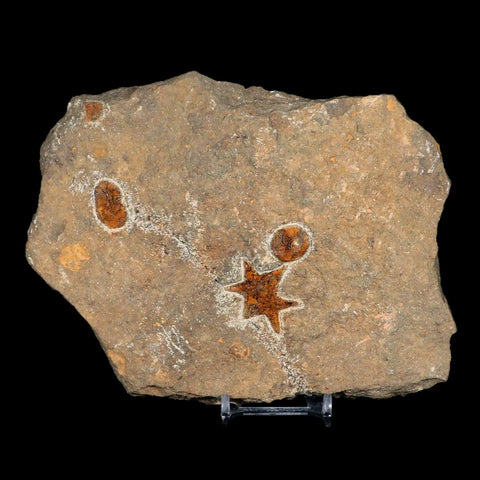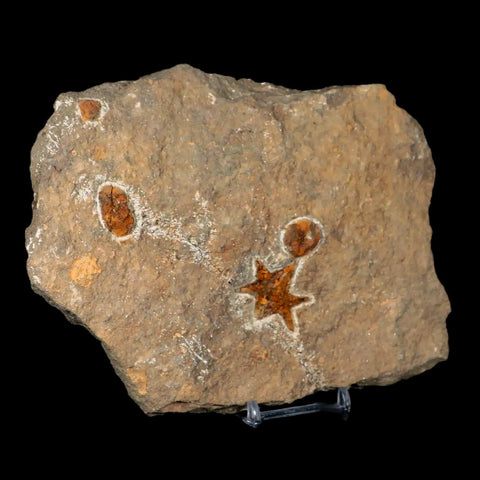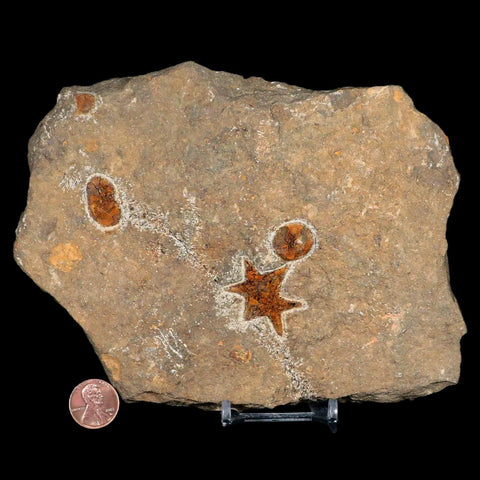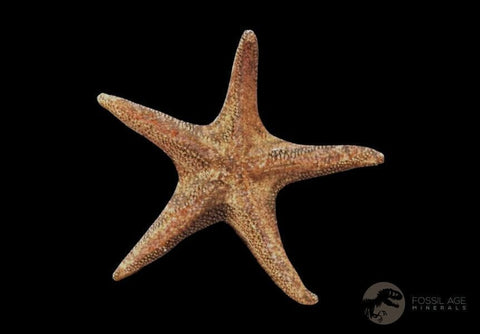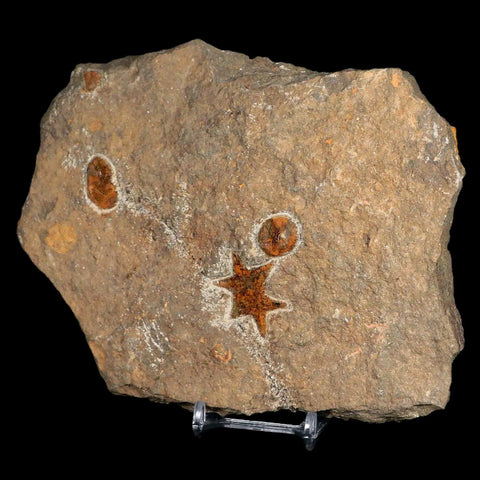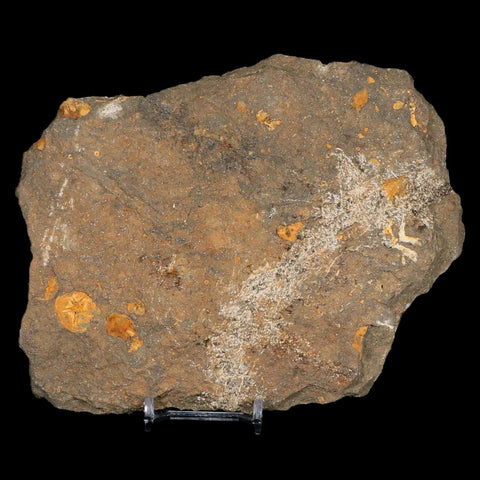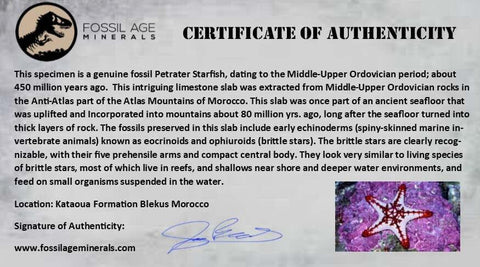31MM Brittle Star Petraster Starfish Fossil Ordovician Age Blekus Morocco COA
Location: Kataoua Formation, Blekus, Morocco
Weight: 1 Pound 2.5 Ounces
Starfish Dimensions: 31MM
Dimension: 6.5 Inches Long, 5.1 Inches Wide, 0.5 Inches Thick (Plate)
Comes with a Certificate of Authenticity.
Comes with a Free Stand.
The item pictured is the one you will receive.
Brittlestar Petraster
This intriguing limestone slab was extracted from Middle-Upper Ordovician (about 450 million years old) rocks in the Anti-Atlas part of the Atlas Mountains of Morocco. This slab was once part of an ancient seafloor that was uplifted and incorporated into mountains about 80 million years ago, long after the seafloor turned into thick layers of rock.
This slab preserves fossils of early echinoderms, including echinoids and ophiuroids, commonly known as brittle stars. The brittle stars are distinguished by their five flexible arms and compact central disc, closely resembling modern relatives that inhabit reef and nearshore environments, feeding on suspended small organisms. Also present are eocrinoids—characterized by elongated, tapering stems and clusters of arm-like structures—likely Ascocystites species, which were suspension feeders extracting microorganisms from the water column using these specialized appendages.
Eocrinoids, despite their name, are not related to crinoids (sea lilies) and display distinct morphological differences from both ancient and modern crinoids. Like many fossil crinoids, their long stems likely helped them attach to hard surfaces and elevate themselves above the seafloor. The specimen includes several larger individuals alongside much smaller ones, which could be juvenile forms or different species. Interestingly, these smaller individuals are often found close to brittle stars, raising the possibility that the brittle stars may have been feeding on the smaller echinoids.

Please be aware of the nature of fossils:
Being buried under the ground for millions of years under tons of pressure tends to be rough. No fossil comes out of the ground whole and perfect. Most fossils have undergone some restoration, while others are altered by man simply to enhance their presentation in different ways. The workers in Morocco do a very professional job of unearthing and preserving these natural treasures. These are part of the natural beauty of the fossil and are not considered defects.


